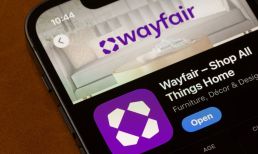As banks get further into crypto, it is hard to not see that evolution as validation for digital currencies and the world’s fastest-growing new asset class. At least that is the conventional wisdom in the wake of a number of deals among providers to bring bitcoin to banks, which would certainly broaden cryptos’ reach.
The question is whether (and perhaps when) the customers will move beyond trading and more fully into commerce.
As reported on Wednesday (June 30), NCR and New York Digital Investment Group (NYDIG), a digital assets firm, are partnering to help financial institutions (FIs) bring more crypto-related functionality in-house. In terms of mechanics, banks and credit unions (CUs) will be able to pair crypto offerings with NCR’s mobile app. The move would enable banks to bring crypto trading to end customers, where trading has traditionally been done via exchanges. In reference to custody services, that would reportedly be handled by NYDIG.
For the banks, the eventuality would be that customers get the crypto and keep it in accounts housed within the FI — and the crypto, in turn, could be spent directly from those accounts. The estimated reach would be considerable: NCR and NYDIG have stated that the bitcoin activity would span 650 banks here in the States, covering 24 million customers.
The move follows the May announcement that FIS would work with NYDIG, also to allow bitcoin transactions (buying/selling/holding) through bank accounts.
Bitcoin and Banking
Advertisement: Scroll to Continue
There’s a telling statement in the FIS release:
“Currently, consumers and corporations must establish new accounts, often with unregulated entities, and go outside of their traditional banking relationships to acquire bitcoin,” FIS said. “The new solution taps into the advanced functionality of the FIS Digital One Mobile solution to allow banks to provide bitcoin services via a seamless, easy-to-use digital experience, enabling them to drive fee income and better attract and retain customers.”
The exchanges, of course, have been having a bit of a bumpy time. In recent months, Coinbase has gone public, to much fanfare. On the other side of the equation, the crypto exchange Binance has been effectively hobbled in part by the U.K. financial authority, which has said the firm is not permitted to undertake “regulated activity” in that country. This seems to means the crypto activity is being confined to unregulated, unregistered avenues (i.e., it’s been risky, and it will stay risky).
The moves between the banks and NYDIG here in the States is a nod to the fact that the exchanges have been reaping the benefits of transaction-related fees — and banks, not surprisingly, want to capture some of those revenue streams. Interestingly, NCR may provide custody services at some point in the future, according to reports.
Recent PYMNTS research bears out the interest consumers have in using crypto across a variety of settings. According to a recent PYMNTS report done in collaboration with BitPay, based on responses from 8,000 consumers, people want to own and use cryptos in order to transact. Roughly 18 percent of the adult population is likely to use crypto to buy a good or service, which translates to 46 million consumers. Those who have used crypto in transactions have done so to buy everything from real estate to food delivery. In terms of familiarity, 12 percent of consumers own crypto and 4.5 percent have owned it in the past.
That’s a greenfield opportunity for banks, which can leverage the trust that’s been built up over decades. Separate PYMNTS research has shown that 98 percent of respondents expect a bank to provide three primary things: a place to store their money, a means to save their money and an easy path to physically access their money. Branching out into crypto more directly would satisfy those expectations. It would reduce both banks’ and consumers’ reliance on the exchanges, by extension cementing the trust between consumers and FIs. Whether that incentivizes consumers to embrace bitcoin hand over fist remains to be seen.
Coming Next Week: The Regulatory Picture for Crypto Exchanges, and Beyond
Read More On Cryptocurrency:



